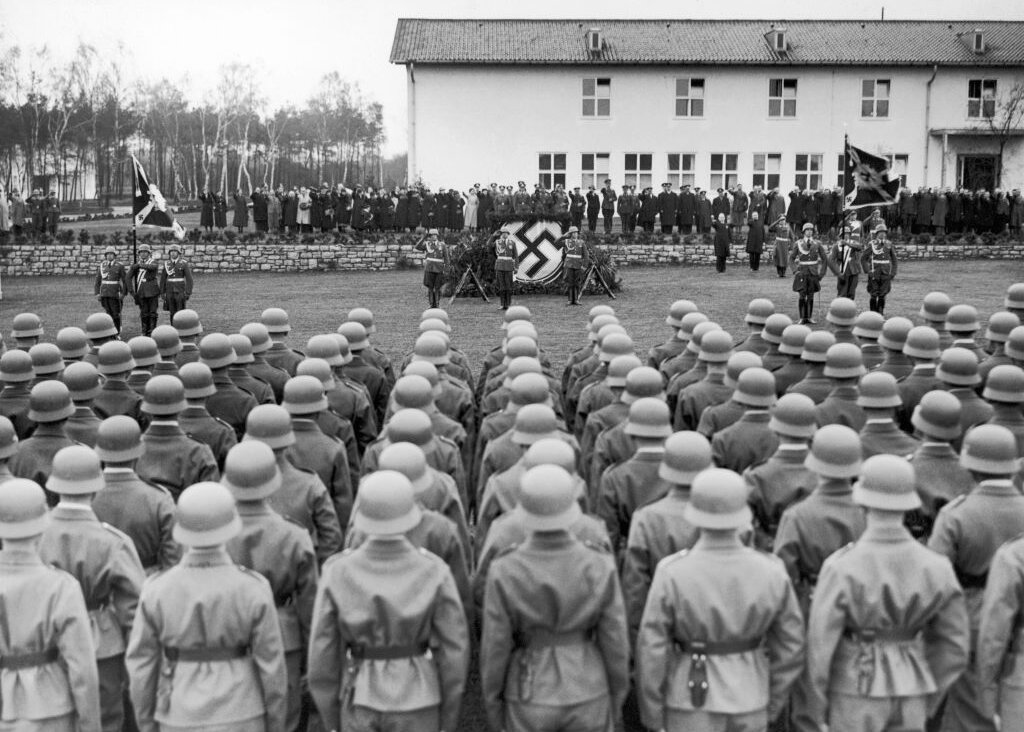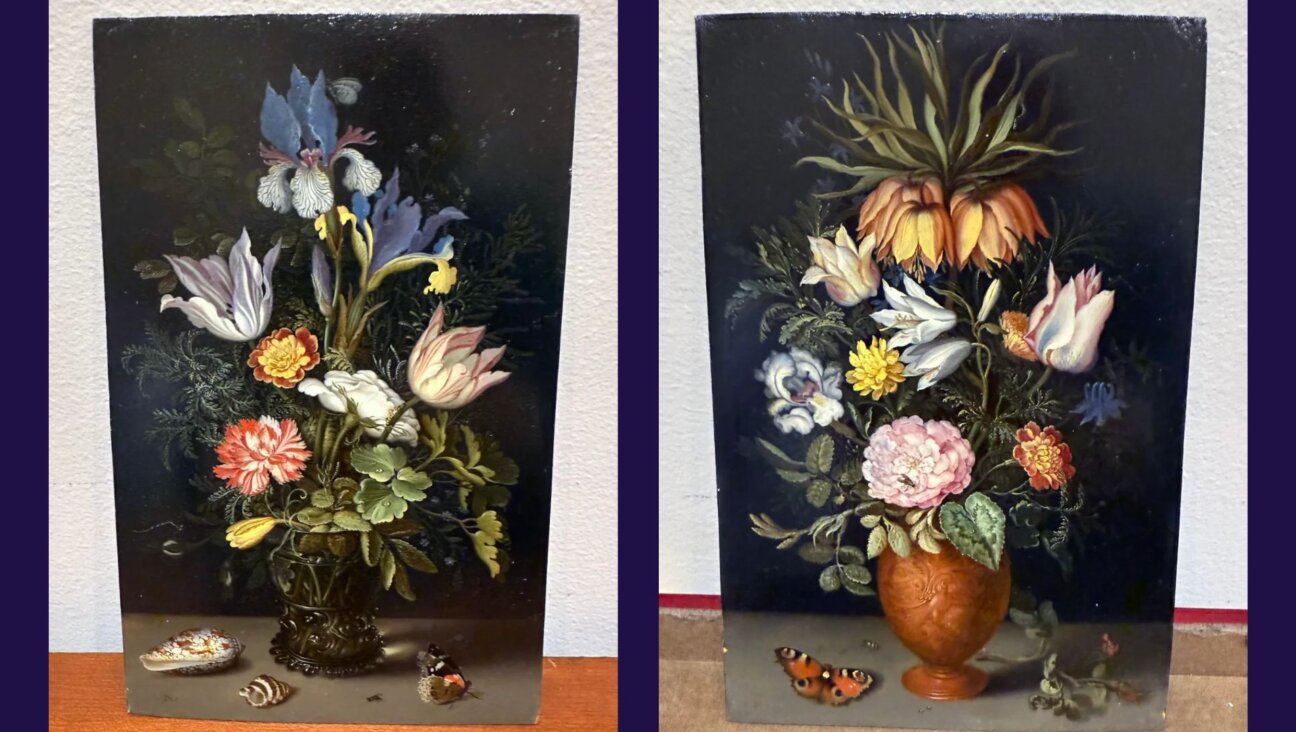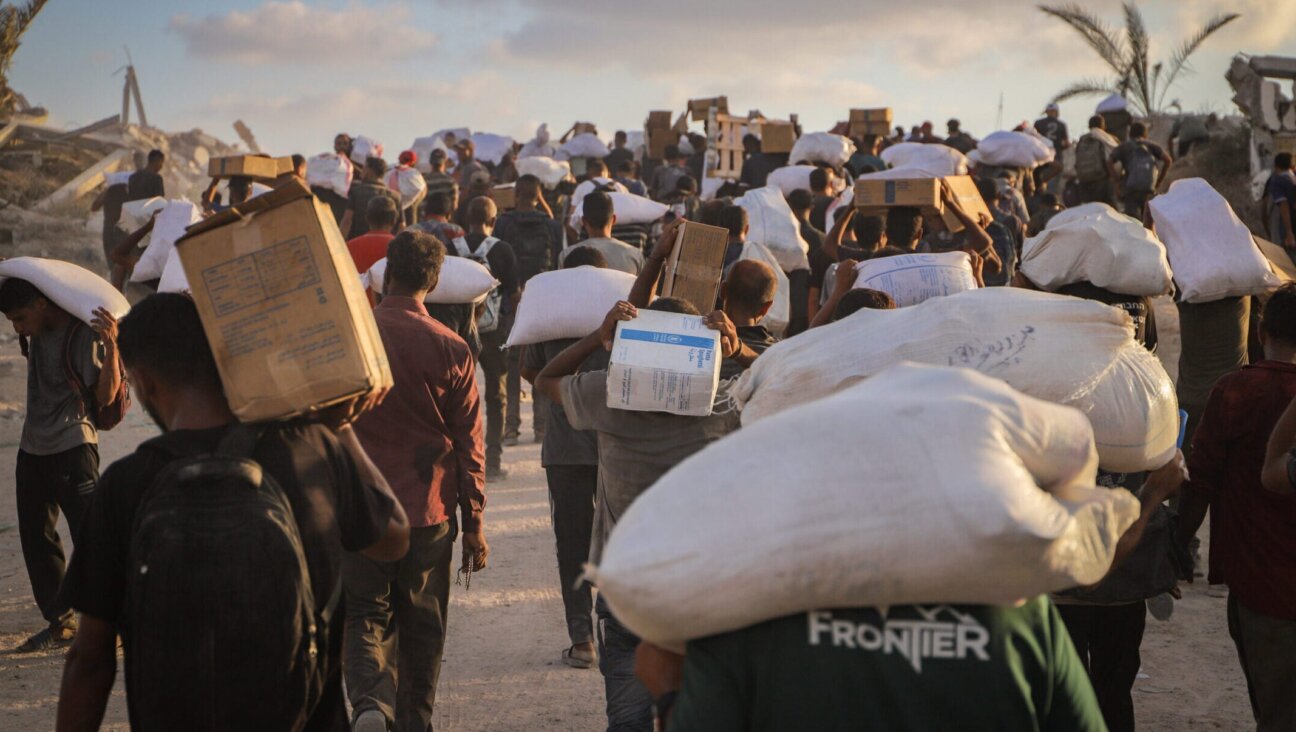Marking Gender Transition in the Mikveh

Ritual Writer: Max Strassfeld, the author, poses with his son. Image by Courtesy of Max Strassfeld
A number of years ago a friend asked me to co-write a ritual to mark his gender-transition to manhood. I say “friend,” but it would be more accurate to call him “queer family.” I am also a transgender Jew, and he is as close to me as my brothers are. Even so, I was hesitant.
While there are several rabbis in my family, I am an academic and not particularly skilled at creating ritual; however, I grew up immersed in a strong, tight-knit Jewish community and am currently finishing up my doctorate in Jewish studies. Out of loyalty to him, I overcame my initial reluctance and promised to try and write something.
At the time, transition rituals for transgender Jews were scarce, although they are becoming more common.
Today there are rituals for many aspects of transition, from taking hormones to changing names. My friend requested a ritual specifically to precede his top surgery, a common procedure undertaken by some transgender men and genderqueers — people who don’t identify as solely male or female — to flatten the chest so that it appears more masculine. While there are traditional Jewish blessings for surviving an ordeal (for which surgery can certainly qualify), these did not seem to fit the moment.
Before my top surgery, for example, I was certainly scared, particularly since I had never undergone surgery. But as a transgender Jew, surgery felt like my bar mitzvah: It represented both a trial that I had to survive and a blessing marking a new stage in my life. I knew I wanted to write a ritual that could capture the complexities of what surgery represented.
My friend’s only guidelines were that he wanted the ritual to center on the mikveh and that he wanted my co-author and me to be the witnesses to his immersion. Since the mikveh is a space that is segregated by sex, we realized from the outset that we were going to have to tackle Judaism’s investment in dividing the world by gender. In general, the broader Jewish community does not always accept the variety of ways in which transgender Jews self-identify. That means that transgender Jews, particularly those of us who do not “pass” as male or female, enter into a sex-segregated space with some trepidation.
My two friends and I represent three very different versions of masculinity: I don’t identify as male or female but I use male pronouns, my transitioning friend identifies as a transman and my co-author is a nontransgender man. I was not sure that the three of us would even be allowed together in a space defined by the boundaries of sex.
After weeks of feeling stymied and feeling myself unable to write a word, I turned to the Talmud for inspiration, focusing on Berachot, the tractate on blessings, and decided to write my section of the ritual using the Shehechiyanu prayer. The Shehechiyanu is a blessing that praises God for helping us to arrive at the present moment. It can be interpreted as a blessing for being alive, but more generally it is used to mark happy occasions, the first days of holidays or new experiences.
The Shehechiyanu was therefore not a particularly creative choice, and nothing about the page of Talmud I selected marked it as ripe for queer (or genderqueer) reinterpretation. And yet, despite the fact that it is a common prayer, using the Shehechiyanu to engage with the mikveh — a space segregated by sex — felt both radical and appropriate. The Shehechiyanu celebrates a moment of arrival but not necessarily a final destination, which complements the idea of a gender transition as a process without a clear-cut beginning or ending.
Our bodies change throughout our lives in many ways, and while this was one deeply significant time for my friend, it will be one of many in his longer journey. Moreover, the use of the Shehechiyanu reframes surgery: It is not just a scary ordeal, but also a moment of arrival that should be celebrated.
The Shehechiyanu (unlike other prayers, which mark the end of an illness, for example), can also be interpreted as a prayer of gratitude for the past. As transgender people, some of us have complicated relationships with our pasts, particularly the ways our pasts are used against us to undermine our gender self-identification. I wanted to incorporate this tension between the Shehechiyanu and our complex relationship to our pasts into a section of the ritual.
“The Talmud asks, ‘Do we only say blessings for collective miracles but not for individual miracles?’” I wrote. “We answer: Like the waters of the mikveh, miracles cannot be so easily separated. We keenly feel the loss of all individual gendered voices that have been silenced. Each member of our community who can recite with a full heart the Shehechiyanu performs a collective miracle.”
Regardless of the way the space of a mikveh is governed by sex, I interpret its undifferentiated waters as a metaphor for the way identities fluctuate, and boundaries are artificial. Water can also be a reference to the losses of the past: Transgender people, particularly transgender women, and even more so transgender women of color, face staggeringly high levels of violence and discrimination. In order to thank God for our arrival, we need to acknowledge our communal grief, to pay tribute to those who did not arrive with us. While water can be separated into droplets, in a mikveh it is a symbol of the way that our struggles for justice are bound together.
The day arrived, and the ritual itself was both surprisingly moving and surprisingly normal. Our encounter with the mikveh turned out to be very straightforward. The Orthodox woman running the mikveh did not question whether the three of us met the definition of male, as I had feared she would have, and as would have been the case in many other places. She let us in, gave us the tour of the facility and offered an explanation of the regulations governing the mikveh, and then left us in privacy. In the end, while we were able to celebrate my friend’s transition, the mikveh is a symbol of a much larger challenge for the Jewish community: In a tradition deeply structured by men’s and women’s roles, how do we, as transgender Jews, fit? What does a Judaism that celebrates transgender lives look like? On that day, the woman who ran the mikveh gave us a gift: She helped the three of us envision a Judaism that could celebrate our lives.
Max Strassfeld will be graduating from Stanford University with a PhD in religious studies this summer. He identifies as trans, Jewish and a parent of a toddler, not necessarily in that order.















